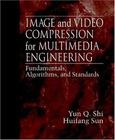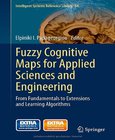Engineering Fundamentals
An Introduction to Engineering
4th Edition

Book Details:
| Publisher: | Cengage Learning |
| Series: | Cengage , Fundamentals |
| Author: | Saeed Moaveni |
| Edition: | 4 |
| ISBN-10: | 1439062080 |
| ISBN-13: | 9781439062081 |
| Pages: | 720 |
| Published: | Jun 17 2010 |
| Posted: | Nov 19 2014 |
| Language: | English |
| Book format: | |
| Book size: | 36.68 MB |
Book Description:
Specifically designed as an introduction to the exciting world of engineering, ENGINEERING FUNDAMENTALS: AN INTRODUCTION TO ENGINEERING encourages students to become engineers and prepares them with a solid foundation in the fundamental principles and physical laws. The book begins with a discovery of what engineers do as well as an inside look into the various areas of specialization. An explanation on good study habits and what it takes to succeed is included as well as an introduction to design and problem solving, communication, and ethics. Once this foundation is established, the book moves on to the basic physical concepts and laws that students will encounter regularly. The framework of this text teaches students that engineers apply physical and chemical laws and principles as well as mathematics to design, test, and supervise the production of millions of parts, products, and services that people use every day. By gaining problem solving skills and an understanding of fundamental principles, students are on their way to becoming analytical, detail-oriented, and creative engineers.
Download Link:
Related Books:
Image and Video Compression for Multimedia Engineering
Fundamentals, Algorithms, and Standards
Advanced technologies have increased demands for visual information and higher quality video frames, as with 3-D movies, games, and HDTV. This taxes the available technologies and creates a gap between the huge amount of visual data required for multimedia applications and the still-limited hardware capabilities. Image and Video Compression for Multimedia Engineering bridges the gap with concise, authoritative information on video and image coding.The tutorial provides a solid, comprehensive understanding of the fundamentals and algorithms of coding and details all of the relevant international coding standards. It presents recent findings on defining methods for generating high quality video bitstreams. The authors present recent research results an...
High Voltage Engineering Fundamentals
2nd Edition
Power transfer for large systems depends on high system voltages. The basics of high voltage laboratory techniques and phenomena, together with the principles governing the design of high voltage insulation, are covered in this book for students, utility engineers, designers and operators of high voltage equipment. In this new edition the text has been entirely revised to reflect current practice. Major changes include coverage of the latest instrumentation, the use of electronegative gases such as sulfur hexafluoride, modern diagnostic techniques, and high voltage testing procedures with statistical approaches. A classic text on high voltage engineeri...
Fuzzy Cognitive Maps for Applied Sciences and Engineering
From Fundamentals to Extensions and Learning Algorithms
Fuzzy Cognitive Maps (FCM) constitute cognitive models in the form of fuzzy directed graphs consisting of two basic elements: the nodes, which basically correspond to concepts bearing different states of activation depending on the knowledge they represent, and the edges denoting the causal effects that each source node exercises on the receiving concept expressed through weights. Weights take values in the interval [-1,1], which denotes the positive, negative or neutral causal relationship between two concepts. An FCM can be typically obtained through linguistic terms, inherent to fuzzy systems, but with a structure similar to the neural networks, which facilitates data processing, and has capabilities for training and adaptation.During the last 10 ...
2007 - 2021 © eBooks-IT.org



